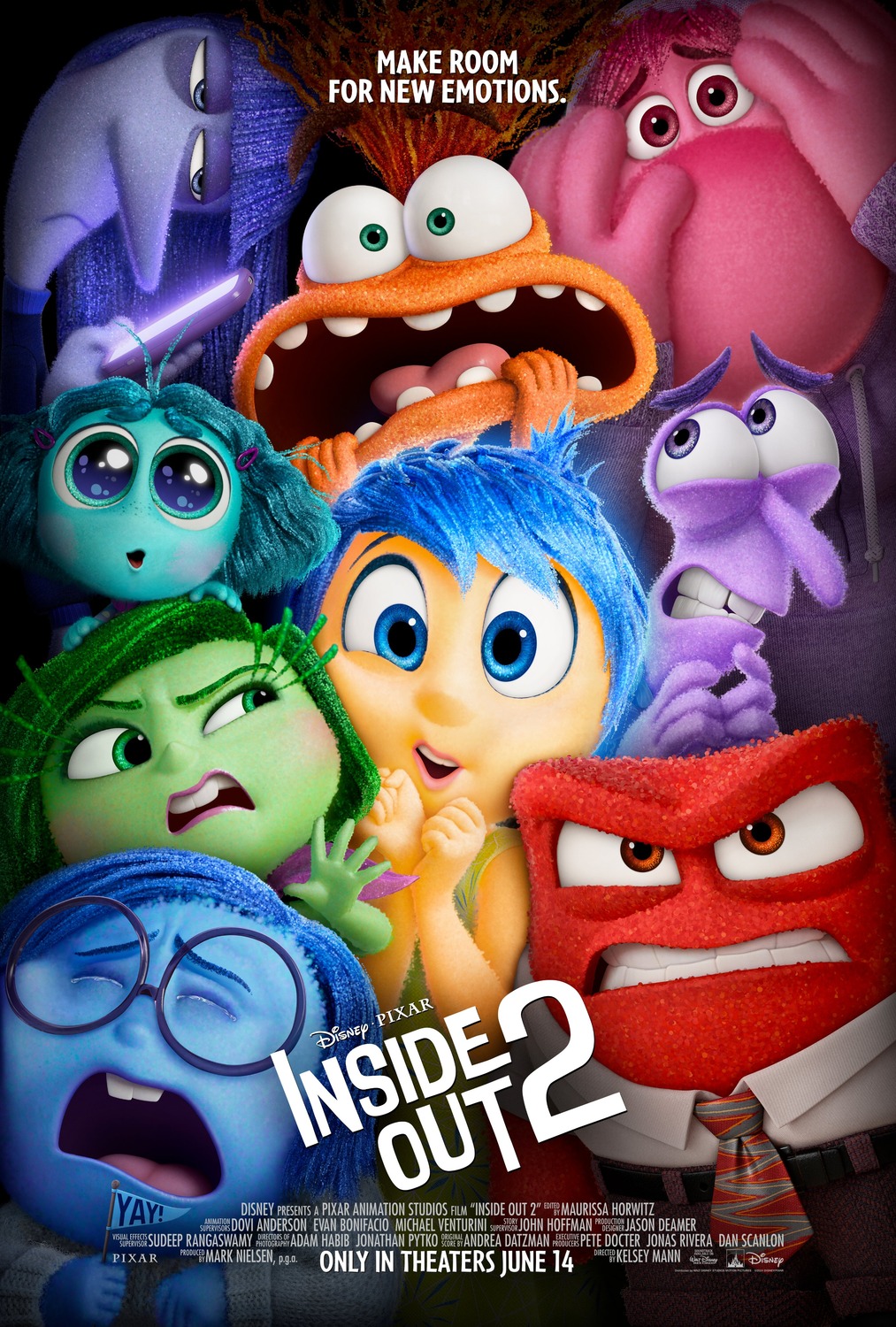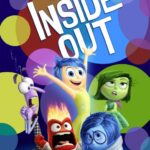Director
Kelsey Mann
Starring
Amy Poehler
Kensington Tallman
Maya Hawke
Set shortly after the events of Inside Out, Riley’s [Tallman] life has come to a pivotal developmental fork in the road: she will be starting high school and has hit puberty. With this comes a series of new social pressures, as well as a whole host of new emotions: Envy [Ayo Edebiri], Ennui [Adèle Exarchopoulos], Embarrassment [Paul Walter Hauser] and the arguable lead of the new group, Anxiety [Hawke]. Over the course of a three day hockey camp, Riley is consumed and overwhelmed by her new emotions who supplant her sense of self (here a very literal MacGuffin) and it’s up to Riley’s primary emotions to save the day.
Before we get into the film critique itself, I feel there’s actually a good technical comparison that represents everything at work in Inside Out 2. So, the sublime quality of animation is one thing that is expected from a new Pixar release, but it’s still worth highlighting just how good it is. Sure, the characters are highly stylised but the detail is unparalleled and rich, and sometimes surprisingly varied. But while the visuals are doing a lot of foundational heavy-lifting, we’re given a very safe score from Andrea Datzman. To clarify, it’s far from bad, but in Inside Out, Michael Giacchino’s themes gave us a Peter And The Wolf level of expressive leitmotifs and assigned instruments for each emotion. And while these are largely back, they have become somewhat ambient and pedestrian. Meaning the entire effort is acceptable rather than inspirational. And that critique is one which can be found in seemingly every aspect of this movie.
See, Inside Out 2’s biggest sin is that it’s a perfectly serviceable continuation but ultimately lacks the same weight. As such, it ends up feeling like a run of the mill sequel to something incredibly novel and unique. Now before you write off the movie altogether, it’s important to highlight that when this film hits hard, it truly excels (the scenes featuring a panic attack and Riley’s imagination being used against her are masterfully done) but that makes it more frustrating when the rest of the runtime feels like the movie is just going through the motions.
But wherever the story falters or struggles, the performances more than pick up the slack. The cast from the first film were wonderfully evocative and while the complexity of some of the newer emotions feel a little one note (Ennui and Embarrassment, I’m looking at you), the presence and inclusion of Anxiety is such a sucker punch. Not only from a narrative perspective but how well Hawke is able to embody Poehler’s energy as Joy and ramp it up to an uncomfortable excess. But coming back to that opening sentence, there’s a semi-notable recasting or two. Fear is now voiced by Tony Hale and Liza Lapira is voicing Disgust. And, admittedly, both perform exceptionally well in their roles. But, as with any ensemble, the more you add, the more key characters are pushed to the side. Meaning, this is very much the Joy/Anxiety show – which, isn’t a terrible thing. And thankfully there are still plenty of standout moments for each emotion to shine. Case in point, on the car ride to the hockey camp the different friend’s respective personifications of Disgust do an in-depth analysis of each other’s facial expressions and it’s great.
My deeply-rooted frustrations are that while the first movie was able to shine an interesting and simplified light on a child’s psychological development, this straightforward approach buckles under the pressures of effectively illustrating the transition to teenage years. And, without being too blunt, there is a huge limitation that a Pixar film can’t bridge which leaves the film feeling somewhat sterilised and safe. Subsequently, Inside Out 2 doesn’t feel like it scratches deep enough beneath the surface of complexity of teenage life, and although it plays out entirely logically, it culminates in a somewhat rushed finale. As if Riley just masters puberty.
As a chaptered story of development – the idea that adults function with something like 25+ key emotions that manifest over the years – there’s a feeling of fragmentation and incompleteness. Case in point, actively drawing attention to “family island” being dwarfed in importance by “friend island” but that isn’t resolved because what child resolves that at 13? That’s something you foster well into your adult years. What’s more, the arcs and themes about the danger of suppressing emotions and memories, coming to terms with who you are, and learning that there is a place for negative emotions, these are the underlying points and lessons of the first film. Which should be a glaring fault of the movie but is, in actuality, a reflection of the human experience. Only, that doesn’t land as well when telling a new story. Especially if your movie doesn’t have the wherewithal to really hone in on the laughable contradictions and complexity of what it means to be human; outside of a few scathing observations.
Despite the above, I still maintain this movie should be watched and sought out, and is a welcome companion to Inside Out. The trouble is, it lacks the platform to tell the story it needs to and, owing to the Disney and Pixar brands, cannot speak to its audience because the majority will possibly be too young to understand or a little too jaded to care. As such, this is a millennial coping feature. A retrospective look-back and pat on the shoulder saying “I know it was hard.” Which, to be honest, isn’t the worst thing for a film to be.
Release Date:
14 June 2024
The Scene To Look Out For:
There are two parallel scenes that were very clear, concise, and effective. On the one hand, we have Riley’s opening hockey match, which gives the necessary room to reintroduce us to Riley’s five core emotional personifications. It not only quickly illustrates their various fortes and foibles, but also how they have been working in harmony. The second is the introduction of the new emotions, all of which chaotically takes place when meeting an older student. Again, direct and relatable throughout.
Notable Characters:
For the embodiment of a single emotion, it would be easy to run these characters into repetitive cliche but there’s a fair amount of nuance on display here. Case in point, Poehler’s performance as Joy offers us more detail and sophistication. After all, it’s not possible to be positive and upbeat all the time; even for a creature of pure unbridled joy. And nowhere is that clearer than during the formation of Riley’s new sense of self, where the words “I’m a good person” are replaced with “I’m not good enough.” It’s easily one of the strongest moments in the film and is quite frankly crushing. Maybe not for the younger viewers, but it will absolutely gut every adult in the room.
Highlighted Quote:
“I’ll tell anxiety “don’t worry so much anymore” and she’ll say “thanks I never thought about it like that.””
In A Few Words:
“A valiant attempt of note but not one that can stand up to the powerful potency of its predecessor.”
Total Score: 3/5

![The Red Right Hand Movie Reviews [Matthew Stogdon]](https://reviews.theredrighthand.co.uk/wp-content/uploads/2021/12/cropped-header1.png)



